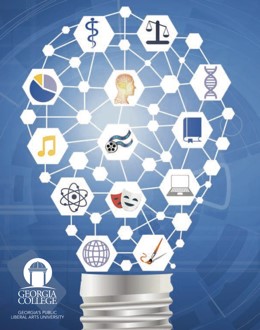The Effects of Humor to Reduce Anxiety in College Students
Abstract
Past research has shown that exposure to humorous events can reduce state anxiety in stressful educational settings, such as math tests (Ford, Ford, Boxer & Armstrong 2012). Research also shows that exposure to an external humor event may lead to a shift towards a more positive emotional state, and competes with the negative emotional thoughts. For example, Randler, Wust-Ackermann, and Demirhan (2016) found that watching a humorous video before partaking in a dissection of a fish reduced the state anxiety that students felt during the dissection. Cann, Holt, and Calhoun (2016) found that the exposure to a humorous video decreased self-reported levels of stress after a stress-induction task. However, research has not directly investigated whether the timing of humor exposure is important. The current study investigates this timing factor, and thus compares the effectiveness of humor as an antidote to already-experienced anxiety (i.e., as a “cure”) to the effectiveness of humor as buffer of subsequent anxiety (i.e., as “prevention”).
Undergraduate participants in this ongoing study will be assessed on baseline anxiety levels. Then, half of the participants will view a humorous or a control video, followed by an anxiety induction (the prevention sequence). The other half of participants will undergo an anxiety induction, followed by a humorous or a control video (the cure sequence). The stress induction task asks them to think about a stressful event in their life and then write about it. All participants will take one final anxiety measure test. Changes in anxiety from baseline to post-test will be analyzed using a 2 (sequence: prevention vs. cure) X 2 (video type: humorous vs. control) X 3 (time of STAI assessment) factorial ANOVA. We predict that humorous video conditions will result in lower anxiety regardless of sequence, but that the cure sequence will result in the lowest post-test anxiety.
Findings from this study may contribute to our understanding of different methods help to reduce anxiety levels, and how humor could be used most effectively to cope with stressors.
The Effects of Humor to Reduce Anxiety in College Students
Past research has shown that exposure to humorous events can reduce state anxiety in stressful educational settings, such as math tests (Ford, Ford, Boxer & Armstrong 2012). Research also shows that exposure to an external humor event may lead to a shift towards a more positive emotional state, and competes with the negative emotional thoughts. For example, Randler, Wust-Ackermann, and Demirhan (2016) found that watching a humorous video before partaking in a dissection of a fish reduced the state anxiety that students felt during the dissection. Cann, Holt, and Calhoun (2016) found that the exposure to a humorous video decreased self-reported levels of stress after a stress-induction task. However, research has not directly investigated whether the timing of humor exposure is important. The current study investigates this timing factor, and thus compares the effectiveness of humor as an antidote to already-experienced anxiety (i.e., as a “cure”) to the effectiveness of humor as buffer of subsequent anxiety (i.e., as “prevention”).
Undergraduate participants in this ongoing study will be assessed on baseline anxiety levels. Then, half of the participants will view a humorous or a control video, followed by an anxiety induction (the prevention sequence). The other half of participants will undergo an anxiety induction, followed by a humorous or a control video (the cure sequence). The stress induction task asks them to think about a stressful event in their life and then write about it. All participants will take one final anxiety measure test. Changes in anxiety from baseline to post-test will be analyzed using a 2 (sequence: prevention vs. cure) X 2 (video type: humorous vs. control) X 3 (time of STAI assessment) factorial ANOVA. We predict that humorous video conditions will result in lower anxiety regardless of sequence, but that the cure sequence will result in the lowest post-test anxiety.
Findings from this study may contribute to our understanding of different methods help to reduce anxiety levels, and how humor could be used most effectively to cope with stressors.


